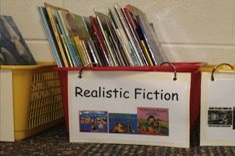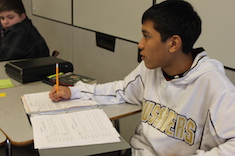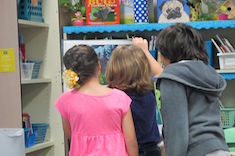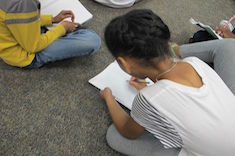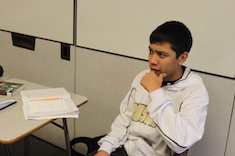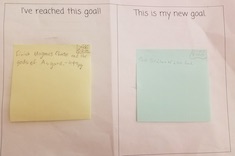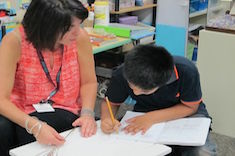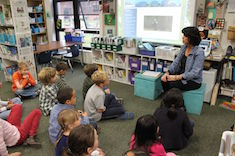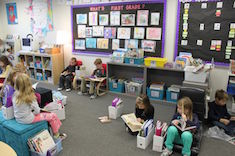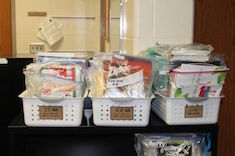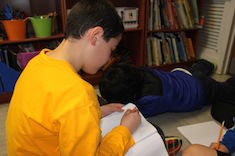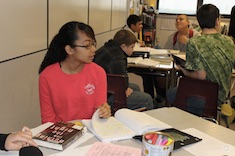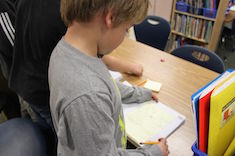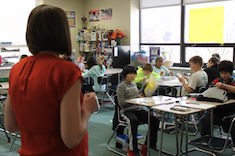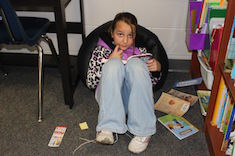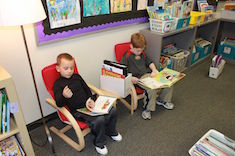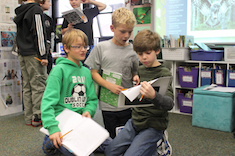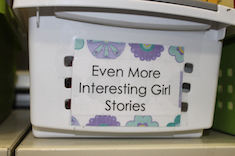Articles
Here is where you’ll find all the latest print features from our contributors. If you’d like to browse specifically by grade level, topic, or contributor, you can use the links in the right sidebar.
Latest Content
Getting the Ball Rolling in a Realistic Fiction Unit
Melanie Meehan helps elementary students move from narratives to realistic fiction by beginning with “facts” about their fictional characters.
Rhyming Words and English Language Learners
Stella Villalba explains why focusing on rhyming words is crucial for young English language learners.
Creating Curiosity with Story
Mark Levine finds that the secret to engaging students in what might be perceived as dry historical topics is to create curiosity with story.
Free Range Learning with Nonfiction (Part 1)
Andrea Smith's students explore nonfiction through free-range roaming. She explains how she sets up expectations and resources early in the year in this first installment of a two-part series.
Life in a Single Breath
Shirl McPhillips says hello to autumn and explores the power of haiku.
Setting Weekly Goals
Tara Barnett and Kate Mills share the process of helping students set weekly goals and then reflect on their progress every Friday.
The Daily Record
Mark Levine uses the “daily record” to encourage reflection throughout each day’s workshop in his social studies classroom.
Tracking Student Goals
Carly Ullmer transfers a messy goal-setting protocol to her seventh graders, and in the process finds they take on more accountability for individual success.
Conferring Questions
Ruth Ayres finds there can be a difference between questions in writing conferences that inspire an enthusiastic response, and those that foster more reflection and independence. Download a question list to use during your writing conferences.
Goal-Setting Ideas for Students
Melanie Meehan shares a wealth of ideas for better goal-setting with students.
Voice and Choice in the Goal-Setting Process
Clare Landrigan and Tammy Mulligan take a child step by step through the process of creating a meaningful writing goal.
Increasing Student Engagement During Minilessons
Melanie Meehan has tips for keeping students engaged during minilessons.
In Search of Just-Right Reading Spots
If children can choose just-right reading spots, they will have more stamina for reading. Heather Fisher explains how she works with first-grade teachers and students to build this skill.
Building Better Book Baggies
What happens when you establish a routine early in the year, only to discover students aren't using it a few months later? Shari Frost mentors a teacher who is helping his young students improve their book selection skills.
Growing Writing Stamina
Tara Barnett and Kate Mills have a confession to make: in the first weeks of school, many of their fourth-grade students didn’t write much at all in workshops. It was only after tackling the issue of writing stamina head-on that they saw rapid progress.
Visual Essays
Gretchen Schroeder finds visual essays are a fun option for her high school students to present what they have learned just before Christmas break.
Getting Started with Voice Recorded Responses
Gigi MicAllister gives step-by-step advice on how she set up voice-recorded response as an option in her fourth-grade classroom.
Getting Started with Student Podcasting
If you’re interested in launching student podcasts, Matt Renwick has resources and tips for getting started.
Everybody Wants to Be a Hero (and Needs a Guide)
We are wired for story, and sometimes children living hard lives need to learn how to rewrite their story. Ruth Ayres shares the teacher’s role in the process.
Supporting Brave Writers
Tara Barnett and Kate Mills use the Sara Bareilles song “Brave” to help their fourth-grade students move from bed-to-bed stories to more emotive writing early in the year.
Teaching Students How to Give Revision Suggestions
Franki Sibberson shares a lesson progression to help students learn how to give helpful revision feedback. She uses online videos and resources to support her work.
Why I Don’t Like Erasers
Melanie Meehan explains why erasers can be problematic in writing workshops, beyond just eliminating the ability of teachers to see the progression of revisions in a young writer's work.
Story Maps for Reflection in the Midst of Drafting
Jennifer Allen finds the use of a story map opens up revision possibilities for a young writer stuck in a drafting rut.
Student (and Teacher) Risk-Taking
Carly Ullmer ponders what it means to take risks in her middle school classroom as she and her students experiment with different response options.
Creating a Culture of Book Love
Tara Smith shares some of her favorite online resources for keeping up with new books, as well as organizing tips for classroom libraries.
Using Paired Texts with Beginning Readers
Shari Frost explains how teachers can use paired texts to help young readers build their skills, starting with books they already know and love.
Recess of the Mind
Scott Jones explains how thinking outside the normal time frame for writing instruction helped him reach boy writers.
No More Strong Girls?
Are there ways for girls in literature to be heroic without fighting? Shari Frost asks herself this question in compiling her latest booklist.
Branding Blogs (Part 3)
Andrea Smith concludes her series on the power of branded student blogs in her fourth-grade classroom.
Branding Blogs (Part 2)
Andrea Smith continues her series on the power of "branding" for improving student blogs. In this installment, students examine mentor blogs and bloggers.
Browse Content By
Type
Category
- Assessment Tools
- Big Fresh Archives
- Booklists
- Choice Numeracy
- Classroom Design
- Common Core
- Community Building
- Conferring
- Content Literacy
- Digital Literacy
- English Language Learners
- Equity
- Family Relations
- Free Samples
- Guiding Groups
- Leadership
- Literacy Coaches
- Mentor Texts
- Minilessons
- New Teacher Mentors
- Podcasts
- Poetry
- Quote Collections
- Reading Strategies
- Self Care
- Struggling and Striving Learners
- Talking and Listening
- Teacher Study Groups
- Teaching Reading
- Teaching Writing
- Word Study and Vocabulary
Author
- Melissa Quimby
- Nawal Qarooni
- Gwen Blumberg
- Julie Cox
- The Lead Learners
- Hannah Tills
- Josie Stewart
- Ruth Metcalfe
- Mallory Messenger
- Becca Burk
- Jodie Bailey
- Vivian Chen
- Mary Brower
- Tiffany Abbott Fuller
- Stephanie Affinito
- Ruth Ayres
- Leigh Anne Eck
- Heather Fisher
- Shari Frost
- Julie Johnson
- Suzy Kaback
- Gigi McAllister
- Shirl McPhillips
- Melanie Meehan
- Cathy Mere
- Debbie Miller
- Tara Barnett and Kate Mills
- Tammy Mulligan
- Dana Murphy
- Bitsy Parks
- David Pittman
- Brenda Power
- Heather Rader
- Matt Renwick
- Mandy Robek
- Christy Rush-Levine
- Gretchen Schroeder
- Jen Schwanke
- Brian Sepe
- Katherine Sokolowski
- Stella Villalba
- Jennifer Vincent
Grade Level
Choice Literacy Membership
Articles
Get full access to all Choice Literacy article content
Videos
Get full access to all Choice Literacy video content
Courses
Access Choice Literacy course curriculum and training

